Puravai Water
Puravai Emergency Water - FREE SHIPPING ON BOTH SIZES
Puravai Emergency Water - FREE SHIPPING ON BOTH SIZES
Couldn't load pickup availability
Puravai Emergency Water
1 Case = 6 Bottles (SOLD in a set of 2)
1 Pallet = 132 Cases (792 Bottles) - Enough drinking water for 2 people for a year!
The POWER of Bacteria FREE!
The Toughest Water in the Storage Market!
- NO Seams: We use induction coils to melt a plastic seal on top of the bottle so there are absolutely no seams, and no seams means water can't get out and bacteria can't get in until you open the bottle, even decades later.
- Triple Sealed: Our bottles have 3 levels of protection, an induction seal, a click tight lid, and a shrink wrapping over the lid to make sure your water hasn't been tampered with. We work to adhere to government and military standards as much as possible.
- High Density Bottles: Our bottles are super thick!! They're built for the unpredictability of emergency situations. You can drop, scrape, or bump them, and your water stays protected.
- Floats: Even filled to the brim, our bottles are made to float in any water. You never have to worry about floods or dropping your water off the side of a boat.
- No Rotting: Because we use high density HDPE bottles, you don't have to worry about mildew and mold forming and ruining your water supply.
- Waterproof: Because our bottle don't rust, your water is protected against something as simple as broken pipes or even humidity in the air.
- Reusable: Puravai is made of the same material as U.S. military canteens and we added a lid that can be screwed on and off. So, you can drink portions of your water and close up the bottle throughout the day as well as refill your bottle again and again if needed.
- 100% Recyclable: Our HDPE #2 bottles are able to be recycled completly So, instead of overwhelming landfills, our bottles get repurposed continuously.
Frequently Asked Questions
Want to prepare your family the right way, the first time with exceptional emergency preparedness? Visit www.Thrivalist.com today!
Note: Bulk pricing for groups, institutions, or corporations is available. Call us at 801-583-2215 M-F 10am to 6pm (MST) or SAT 10am to 3pm (MST), except holidays (or email us at contactus@foodstoragedepot.com anytime).
Share This Product
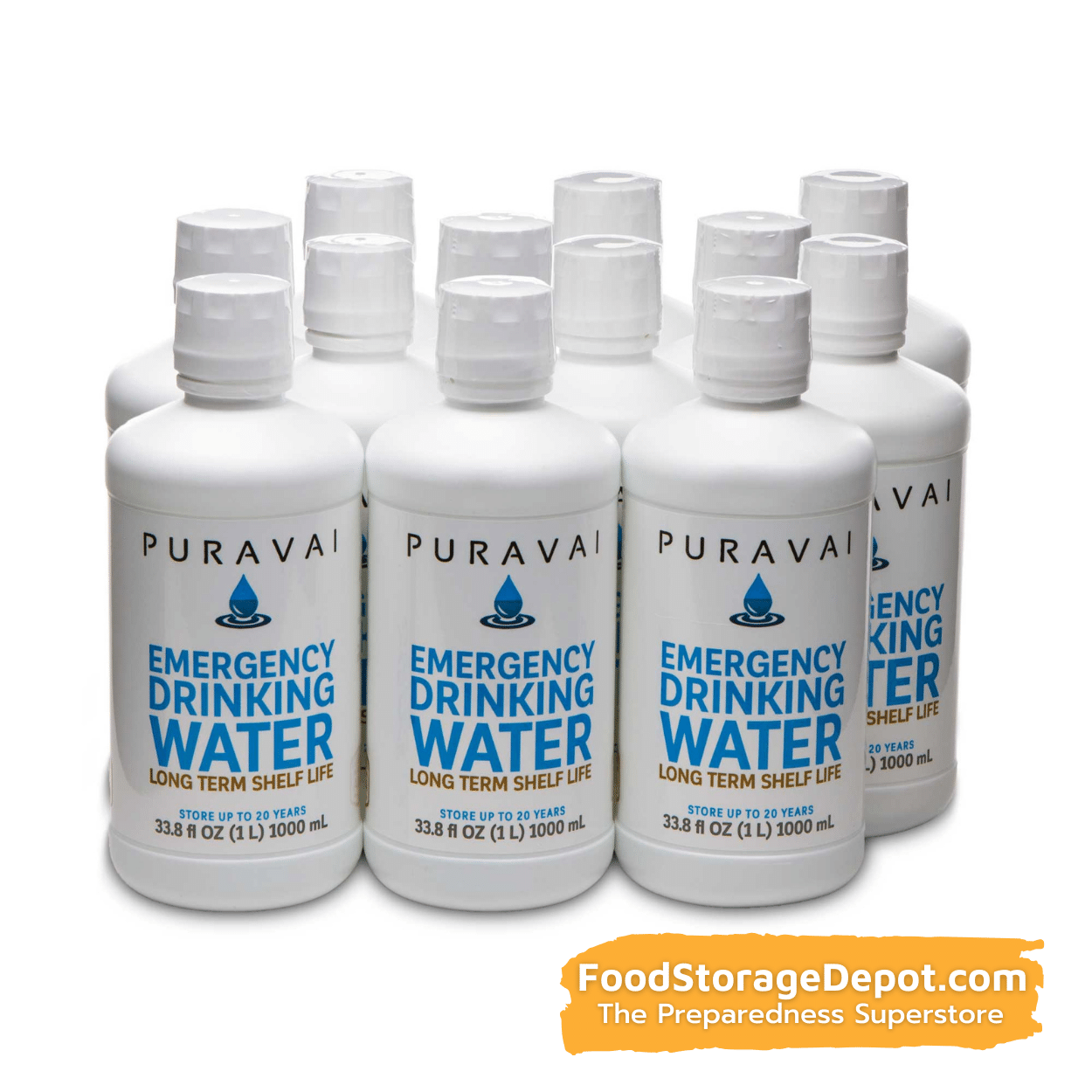
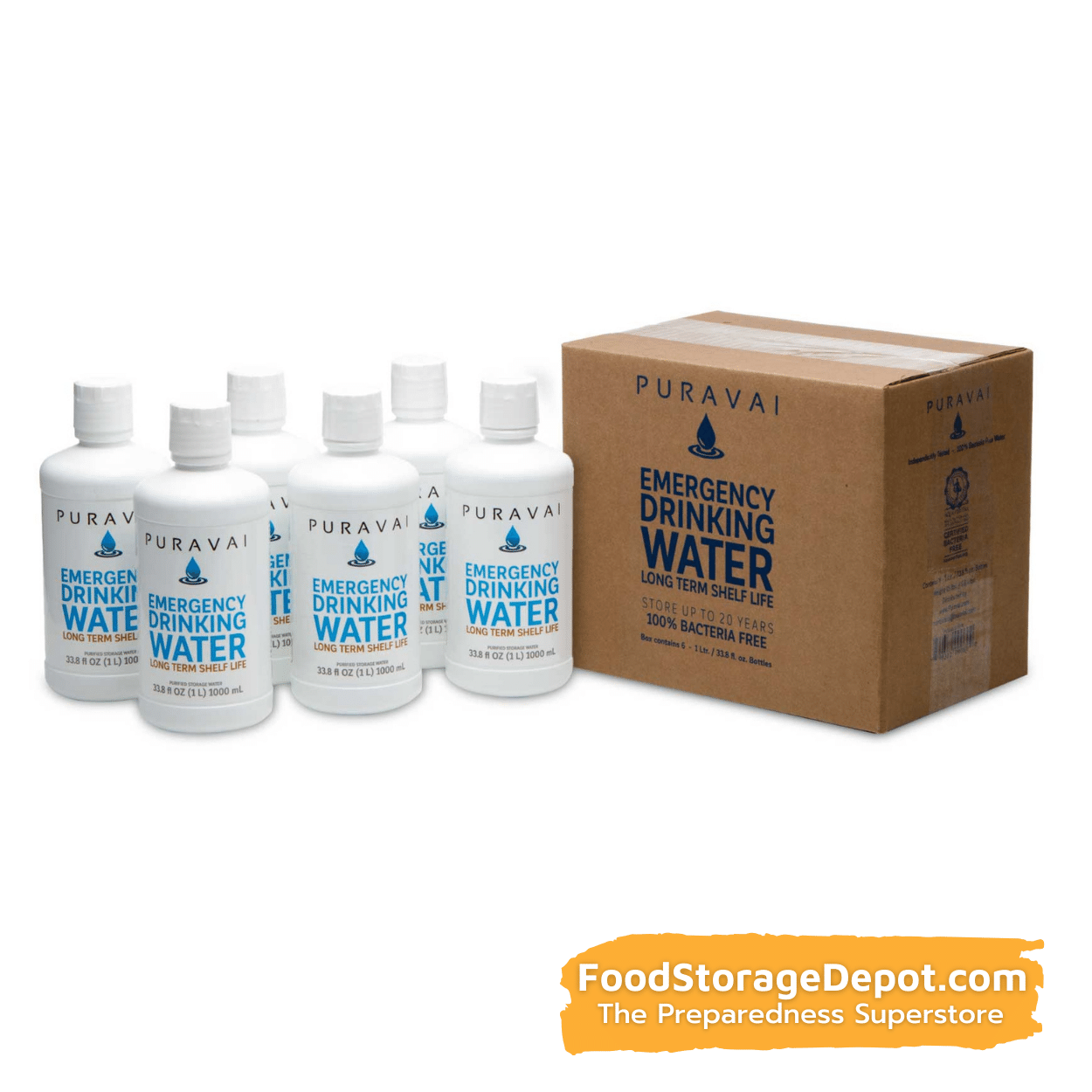
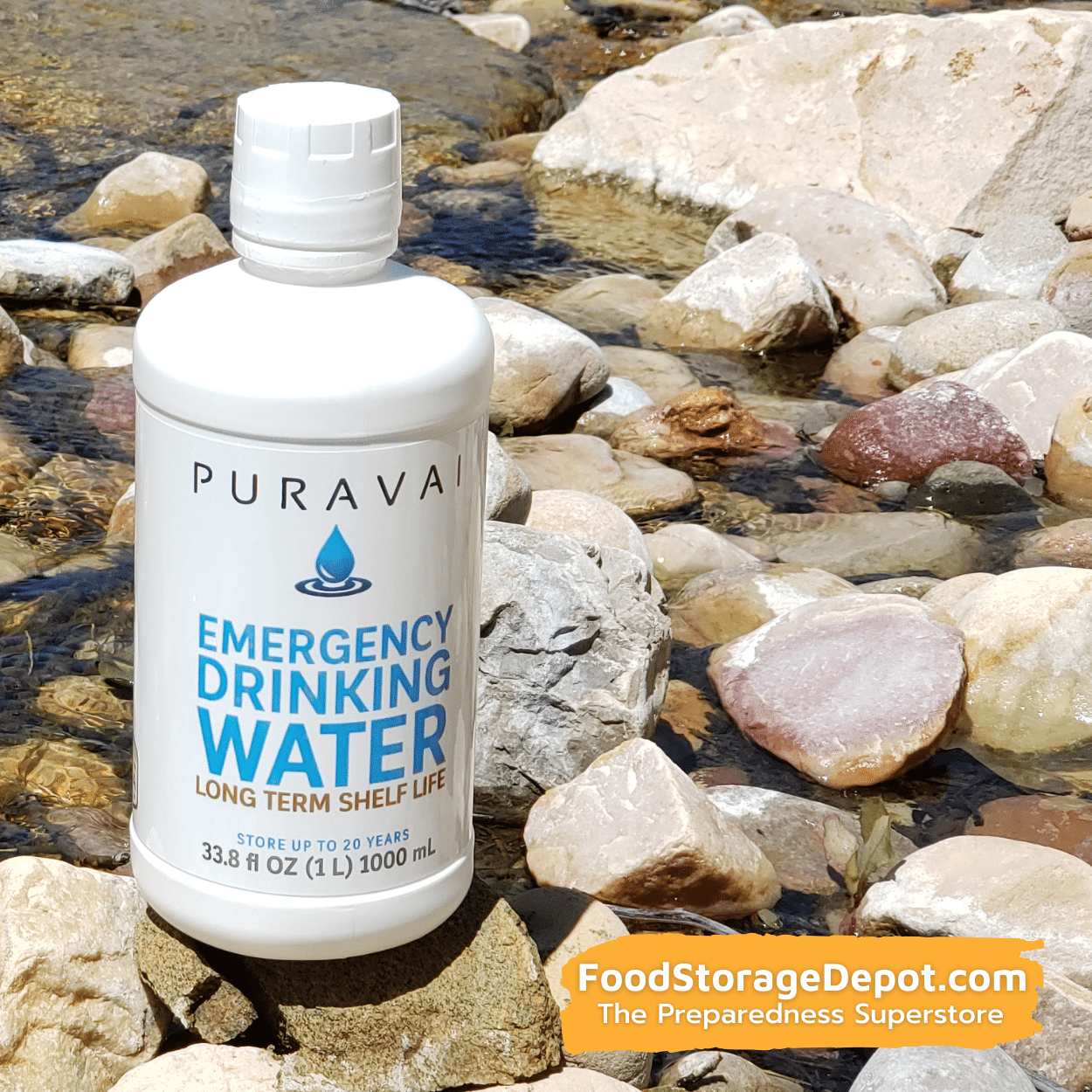
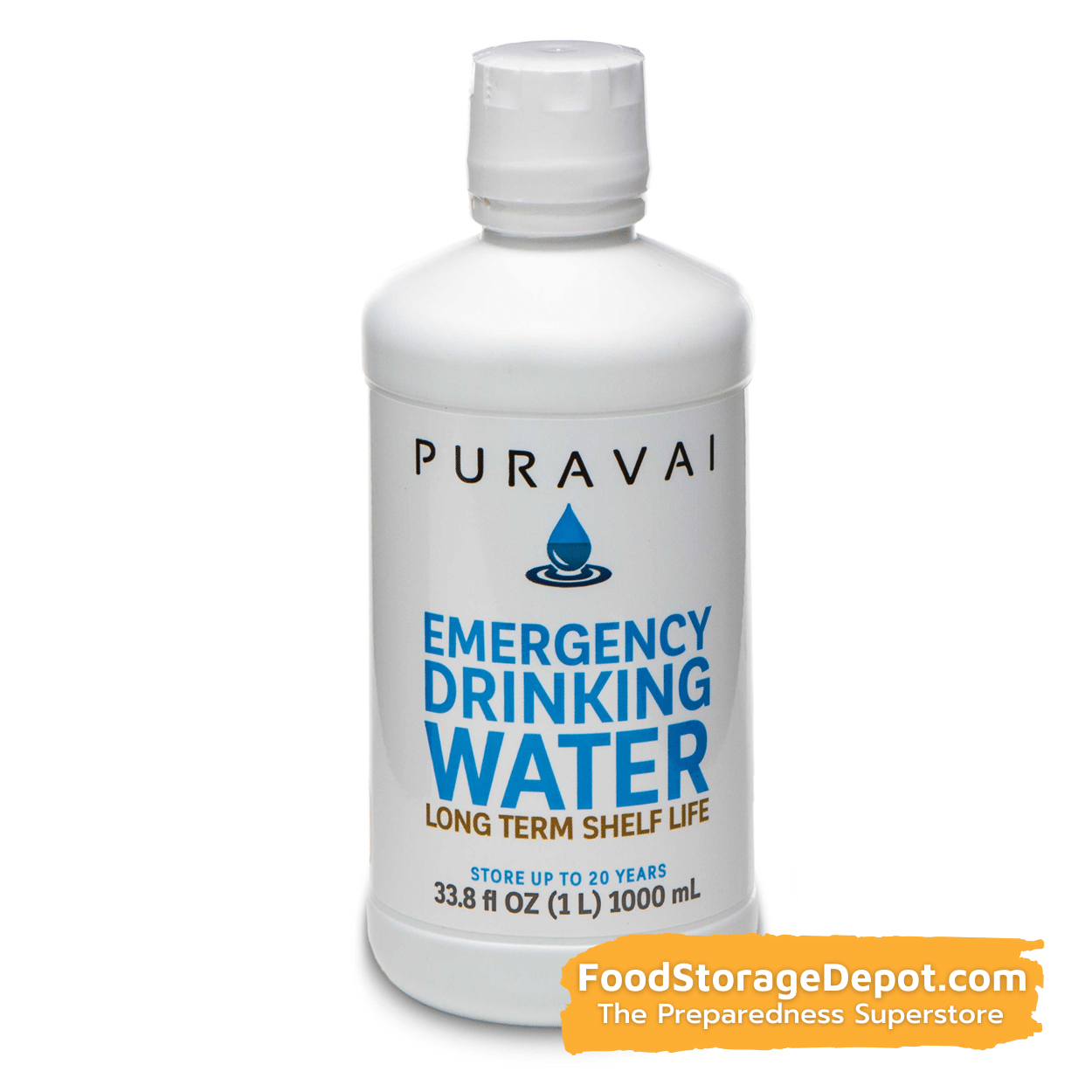

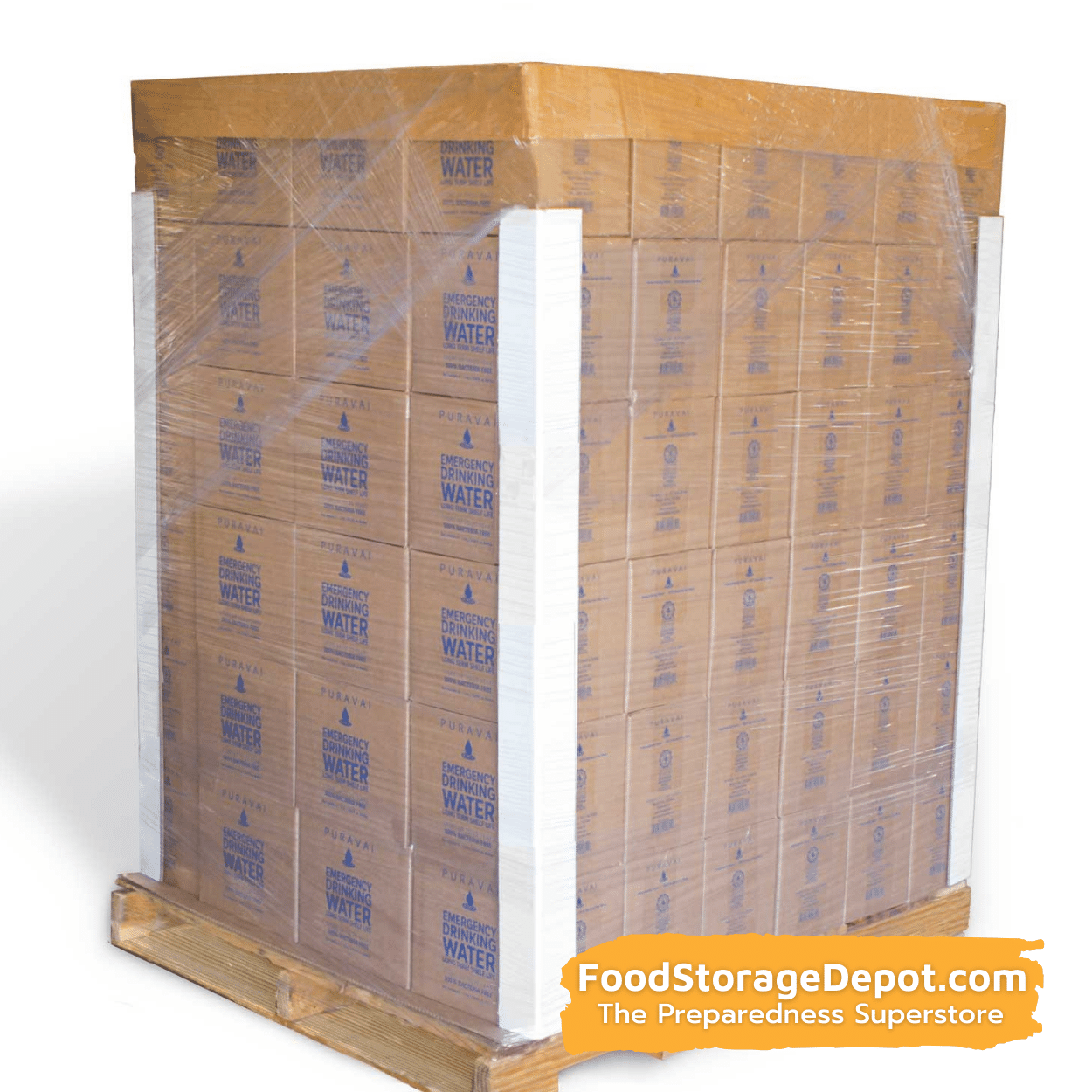
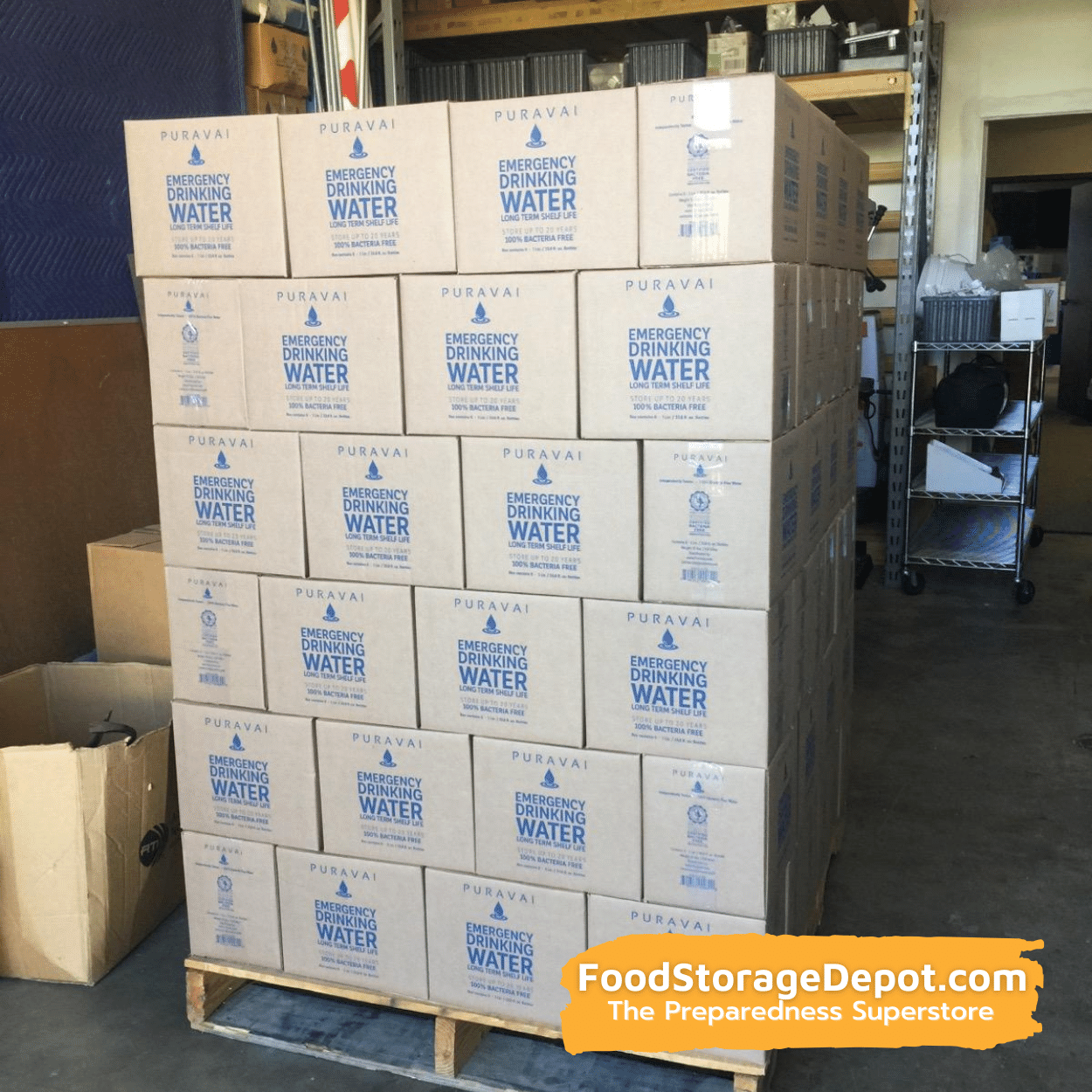
Subscribe to our emails
Be the first to know about new collections and exclusive offers.







